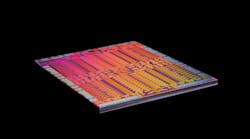Last year, Silicon Valley startup Movellus started selling tools that automate the painstaking process of creating certain analog SoC components. This year, the company is trying to attract more customers. This month, Movellus said it had raised $6 million in funding from Stata Venture Partners, a venture capital firm founded by Analog Devices founder Ray Stata, bringing its total amount raised to around $10 million since it was established in 2010.
“Analog is still a major design bottleneck, even in predominantly digital chips,” Muhammad Faisal, the company's chief executive, said in a statement. Movellus is trying to cut down the challenges. The company sells tools that automatically spit out digital devices capable of carrying out analog functions. The company claims that these parts can be added more easily to chips while delivering the same power, performance and area as custom analog counterparts.
There have never been many shortcuts in analog circuit design. Analog engineering is often described as more of an art than digital design. Analog circuits have to be carefully constructed from a combination of capacitors, transistors, resistors and other parts, and tuned to different currents, voltages and other characteristics—a plodding process that can take many months. Even slight changes to analog components introduces new potential for errors or mistakes.
Analog design presents other challenges. Because analog designs are not process-portable, companies have to manually build analog components for every new chip. They typically have to start building them months ahead of the chip's digitial elements. For instance, analog devices developed using 28-nanometer technology cannot be reused at the 10-nanometer node, according to Movellus. That adds to overall development costs and cuts into time-to-market.
Another challenge is that all the chip's analog components have to be integrated with digital elements surrounding them. Whenever analog circuits have to be moved around the chip's floor plan, the connections to the chip's digital districts have to be reestablished. But any time digital designs need to be moved around the slab of silicon, electronic design tools make the process much easier. These sorts of tools treat analog circuits basically like black boxes.
Movellus is trying to get around some of these challenges. The company's tools can be added on top of other electronic design tools. By performing analog functions inside digital circuits, the company's IP products can be integrated more easily into SoCs. Because the company's analog devices are fundamentally digital, they take up less space inside the chip and reduce failures. The company claims that analog IP causes up to 50 percent of all failures inside chips.
Movellus claims that its 100% digital components can be ported from one process node to another, saving months of development time over custom analog IP products. The startup's semiconductor designs nave been dropped into chips based on the 130-nanometer to 7-nanometer node. Using its latest venture capital funding, Movellus plans to broaden its product line to more analog functions. The company's software tools today can output LDO, PLL and DLL circuits.
“Semiconductor companies are facing aggressive schedules and increasing design complexity in advanced process nodes,” Faisal, who also serves as the company's president, said in a statement. “By expanding existing digital design tools to create functionality previously only achievable in analog design, Movellus dramatically improves efficiency and reduces development and verification time by months.”

